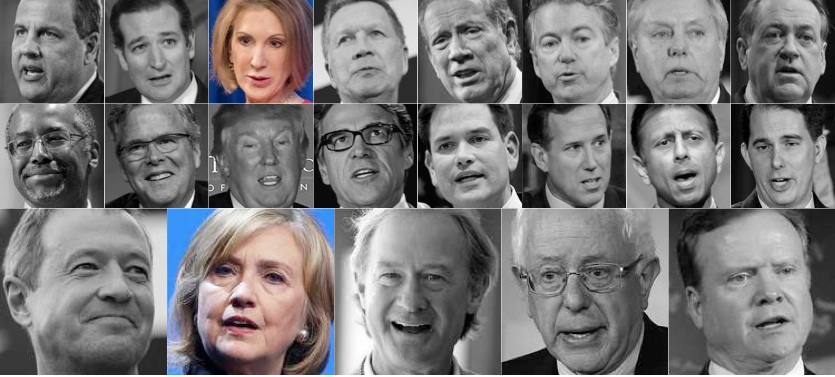So what gives? The dominance of male candidates in the presidential campaign is a reminder of the many hurdles to women’s representation at all levels of American politics.
First, not enough women run – and not only for president. In 2014, women represented about 10.5% of all U.S. Senate and 14% of all U.S. House candidates filed as Democrats or Republicans. Women were 21.4% of Senate and 19.6% of all House nominees (Democrats and Republicans only). Finally, women were 11.1% of major party Senate winners and 19.4% of major party House winners on Election Day 2014.
When we take a look at women running for executive office at the state level, we find an even smaller proportion of female nominees. Women were 12.7% (9 of 71) of major party nominees for governor in 2014, and just five of 36 (13.9%) winners on Election Day.
Sadly, while the numbers of women candidates have increased over time at each of these levels, the pace is slow and unsteady, with fewer women nominees for congressional and gubernatorial offices in 2014 than in previous recent election years.
Why so few women candidates? Researchers have investigated the reasons for women’s underrepresentation for decades, identifying social and structural barriers to recruitment and success. Among these are cultural norms and stereotypes that associate leadership with men and masculinity, gender role expectations feeding a division of labor that keeps women busy as primary caregivers, and structural barriers to women’s entry into politics, whether coming from male gatekeepers or evident in gender differences in access to the political and financial networks so essential for recruitment and campaign support.
Moreover, research from the Center for American Women and Politics (CAWP) shows that women make the decision to run differently from their male counterparts, using a different cost-benefit calculus to determine if it’s worth the risk. Among the state legislators we surveyed, women identified policy change as their primary motivation to run for office, while their male counterparts noted that they were motivated most by a longstanding desire to hold elective office. Added to structural and social hurdles to candidacy, this distinct calculus helps to explain the continued dearth of women candidates in a political climate characterized much more by gridlock than productivity.
As long as women’s access and incentive to run for office are limited, their political representation will continue to lag their male counterparts at all levels. And that dearth of women in office brings us back to today’s campaign for president. Of the 21 major party candidates, 9 have served as governors, 9 have been U.S. Senators, and only three – each of whom has independent wealth – have never held elected office. Thus, the pool from which we draw presidential candidates continues to be dominated by statewide elected officeholders, and statewide elected officeholders are still more commonly men than women. Today, women are 20% of the U.S. Senate, a high-water mark celebrated in the last election, but also far from political parity. Women are six of 50 governors, and only 37 women governors have ever served to date. Finally, women are less likely than men to amass the independent wealth to launch a bid for office outside of traditional political pathways – at least as long as women make up less than 5% of CEOs at S&P 500 companies and continue to make 77 cents on every dollar (or less) a man makes.
So as we watch another (white) man jump into the presidential race, it’s important to consider the gendered context of political campaigns and candidacies. The paucity of women running for president is not an isolated case. Women continue to be outnumbered by men on the ballot and in office at all levels, among them the offices most likely to serve as a pipeline to the presidency. But women do serve in these offices today and can bring just as many (or more) qualifications to a presidential bid as the men who are already in. So what’s stopping women from throwing their hats in the ring? The social and structural barriers that make it harder – and less attractive – for women to run are real, and may be part of the explanation. The women who have run have faced scrutiny and stereotyping distinct from that facing their male opponents, adding another deterrent to women considering a nationwide bid. Finally, women’s rational approach to making the decision to run may deter them from entering the current race, seeing a clear frontrunner on the Democratic side and what some view as more of a sideshow for the Republican nomination.
No matter which of these factors has influenced women’s calculus to candidacy most in 2016, raising them as important explanations for women’s underrepresentation from the presidential level down brings a new and important conversation to today’s presidential news coverage. Instead of focusing on the addition of another man to the list of presidential contenders, let’s ask: why not another woman?


 In April 2015, the
In April 2015, the 
